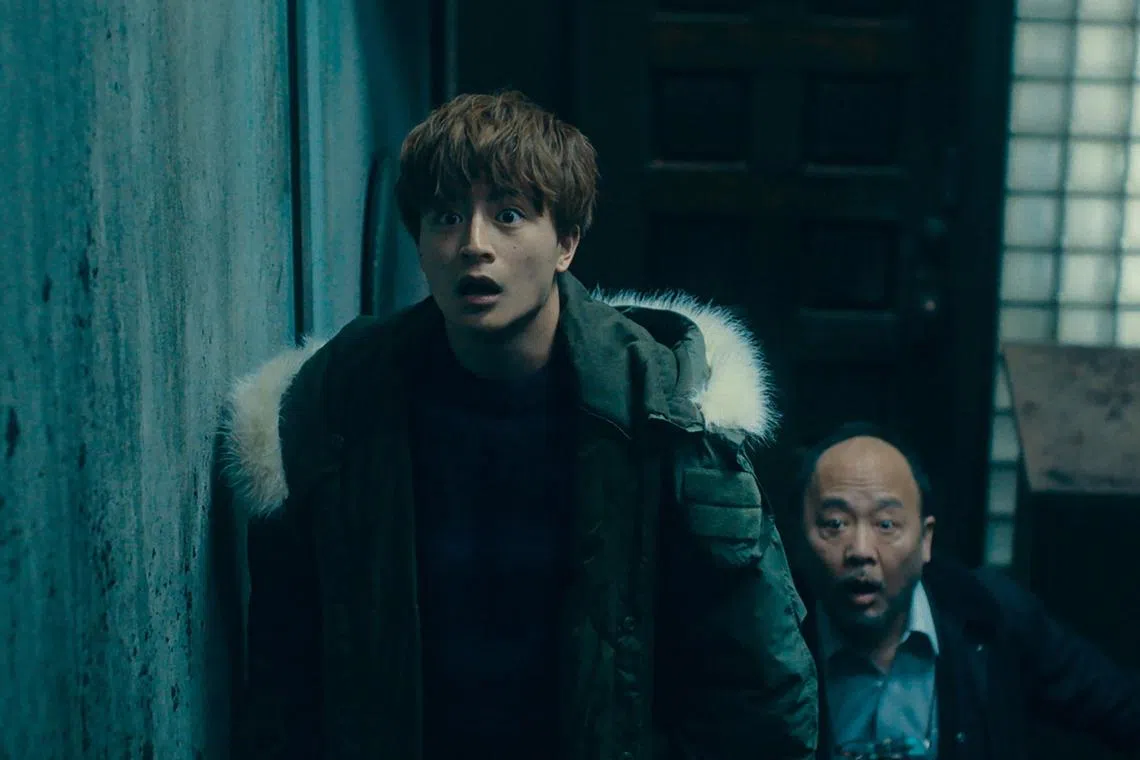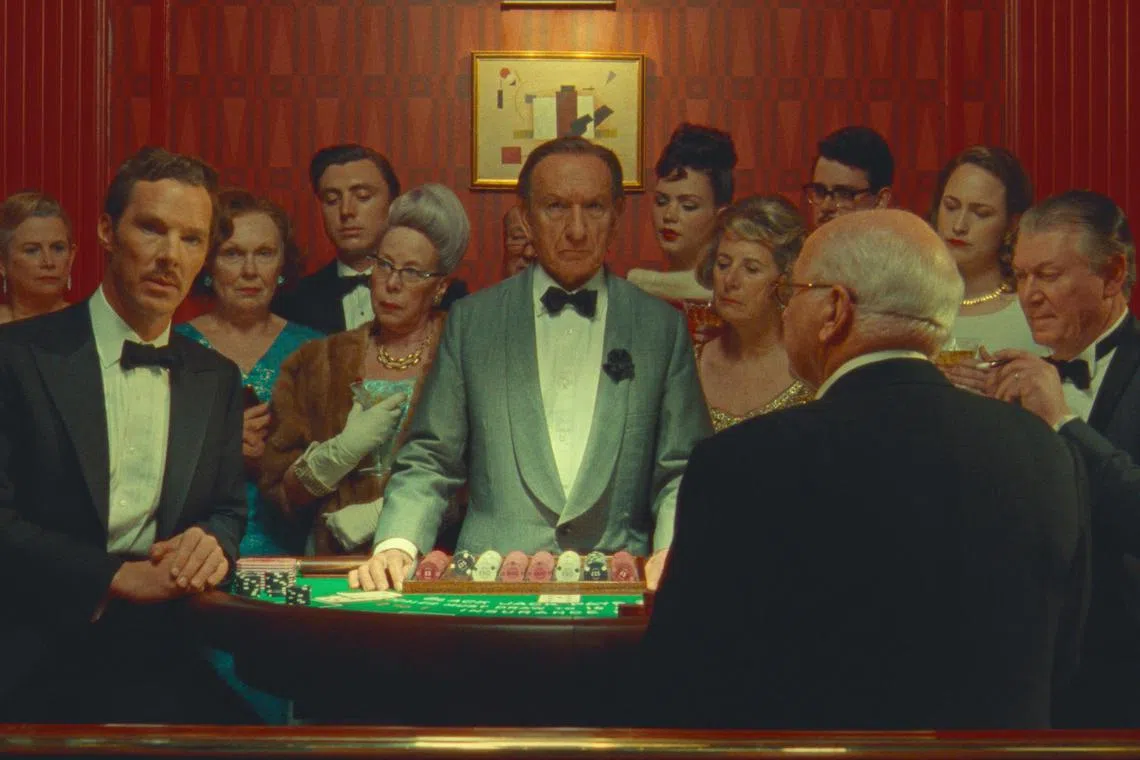At The Movies: J-horror Sana hardly scares, The Wonderful Story Of Henry Sugar is a whimsical treat
Sign up now: Get ST's newsletters delivered to your inbox

Alan Shirahama (left) and Makita Sports in Sana.
PHOTO: SHAW ORGANISATION
Follow topic:
Sana (NC16)
103 minutes, opens on Thursday
2 stars
The story: An eerie melody on a 30-year-old audio cassette haunts listeners to set off a chain of unnatural events. A bad song can have that effect.
Sana is billed as a J-horror mystery by Japanese film-maker Takashi Shimizu of the Ju-On: The Grudge franchise (2000 to 2020).
In fact, the film is a glorified promo for the J-pop outfit Generations from Exile Tribe that is bookended by their concert footage and includes karaoke lyrics for their hits.
All seven members led by Alan Shirahama play themselves, but with expressions of dread upon unearthing the scratchy recording in a Tokyo radio station basement and succumbing to the curse.
Some begin to hum the tune, Minna No Uta (Song For Everyone), which doubles as the film’s Japanese title.
Most worryingly, a Generations performer (Hayato Komori) vanishes, and their manager (Akari Hayami, a former member of Japanese girl group Momoiro Clover Z) brings in a grizzled private eye (comedian Makita Sports) to track him down.
The investigation immerses them in the long-dead world of a spectral middle-school girl (Tomoko Hoshi), whose creepy mother (Marika Yamakawa) is the only character delivering the odd fright.
The story co-scripted by director Shimizu is too feeble to chill. It is a lazy rehash of every genre trope from the onryo, or vengeful spirit, to Ringu’s (1998) condemned analogue media, that urban legend of a tape as a repository of wretched souls.
Also included for no reason is a ghost waif with the name Toshio from Shimizu’s Ju-on creation.
Hot take: Strictly for Generations groupies who have no desire to be scared.
The Wonderful Story Of Henry Sugar (PG)

The cast of The Wonderful Story Of Henry Sugar.
PHOTO: NETFLIX
39 minutes, available on Netflix
5 stars
The story: From 20th-century British author Roald Dahl by way of American film-maker Wes Anderson comes a parable of a self-involved aristocrat, who learns to see without his eyes so he can cheat at blackjack.
Dahl and Anderson are kindred spirits in whimsy, fully simpatico.
The director’s Fantastic Mr. Fox (2009) was a stop-motion rendition of a Dahl children’s novel. And The Wonderful Story Of Henry Sugar, based on a 1977 story of the same title by Dahl, is a picture book that is a blissful marriage of Dahl’s prose and Anderson’s aesthetic – of tone, structure and design.
Ralph Fiennes appears as Dahl.
From his Buckinghamshire cottage, he introduces the audience to the rich idler Henry Sugar (Benedict Cumberbatch) of 1950s London, who in turn reads aloud the journal of 1935 Calcutta doctor ZZ Chatterjee (Dev Patel).
In it, the physician details his encounter with illusionist Imdad Khan (Ben Kingsley), who recounts his apprenticeship under a yogi (Richard Ayoade) to master the discipline of extrasensory sight.
Each narrates Dahl’s text direct to the camera while enacting a sprawling plot that ends in a spiritual epiphany.
Anderson’s movies are like none other in their nested story-within-a-story tableaux and boxy symmetrical compositions. Stagehands arrive to rearrange the painted backdrops. The characters change wigs and costumes.
How he delights in the art and artifice of storytelling.
The mannerisms can grate, like in his recent Asteroid City (2023). But at just under 40 minutes, this confection is a distillation of Anderson’s idiosyncratic ingenuities at their playful best.
Hot take: Size is not everything, and this miniature is near perfect.


